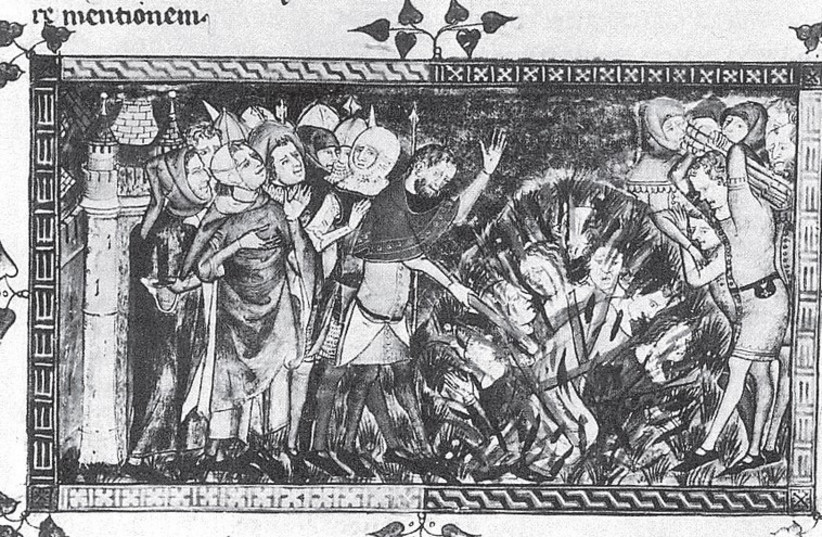On July 18, 1290, King Edward I of England signed the Edict of Expulsion which ordered all the Jews in England to leave by November of 1290.
A part of the reason for the expulsion of the Jews was intense antisemitism that stemmed from their role in European society as moneylenders.
Christianity at the time considered lending money with interest, usury, to be a wholly non-Christian thing, so the church in England outlawed it. The Jews, however, arrived in England with William the Conquerer in 1066, and they didn't have to abide by the church, so they filled the financial system gaps that the Christians could not.
The kings needed the Jewish moneylender for their financial difficulties, so they granted them special status so that they would be subjects of the King rather than subjects of lords like the other English people. This was not entirely to the Jews' advantage though. The kings used their special status to levy heavy taxes on Jews because they didn't need Parliament's approval to do so.
In order to keep up with the heavy taxes, the Jews needed to lend money at extortionate rates which caused much resentment among the Christians. The Jews, therefore, became extremely unpopular, and antisemitism became common all through England.

Antisemitism
The antisemitic images of the Wandering Jew and myths such as Jews murdering Christian children to make matzah with their blood on Passover spread through England. As a result anti-Jewish riots often broke out. One of the most notable of these riots was in 1190 in York where hundreds of Jews were murdered by mobs.
Antisemitism also began to grow in the state's treatment of Jews. In 1218, England became the first country in Europe to require Jews and Muslims to identify themselves through their dress, and Jews were forced to wear identifying badges.
The process to expel the Jews was started in 1275 with the Statute of Jewry which outlawed moneylending to all Jews. The Jews were told they had to acclimate to the new law within 15 years, but antisemitism made getting other jobs extremely difficult for them.
On July 18, 1290, Edward finally signed the Edict of Expulsion, and all remaining debts owed to Jews were signed over to his name. Jews were told to leave England or risk execution. For the next 300 years, Jews could only visit England with special permits, although it is believed that some Jews may have returned to live in England in that time and hid their religion.
While it is believed that Lord Protector Oliver Cromwell allowed the Jews to return to England after King Charles I was overthrown, this is not necessarily true, There was never an official re-admittance. What did happen is that after Dutch Rabbi Menasseh Ben Israel appealed to Cromwell to allow Jews to return to England in 1655, Cromwell convened a conference on the matter which was ultimately inconclusive. Later that year, Cromwell allowed the Jews who were hiding their religion to practice Judaism privately which gave way for them to build synagogues and opened the door for more Jews to return to England.
